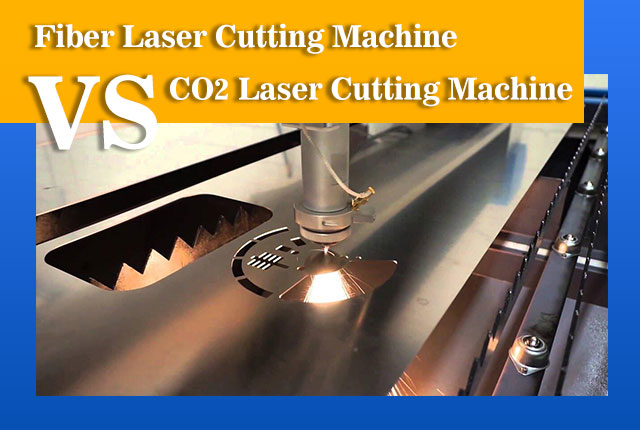WMT CNC Industrial Co., Ltd | All Rights Reserved.Design & Developed by VW Themes

There are two most common laser cutting machines on the market, one is fiber laser cutter machine, and the other is CO2 laser cutting machine. In fact, these two kinds of equipment are used in different fields. Our suggestion is to choose fiber laser cutter machine for metal sheet processing, and CO2 laser cutting machine for non-metal material processing.
Fiber lasers generate lasers through diode pumping and use flexible fiber optic cables to transmit the laser beams, while CO2 lasers generate lasers by exciting nitrogen and carbon dioxide gas in the cavity, and then transmit the beams through mirrors. Fiber laser is a new type of fiber laser developed in the world. It outputs a high-energy-density laser beam and gathers it on the surface of the workpiece to instantly melt and vaporize the area irradiated by the ultra-fine focus spot on the workpiece. position to achieve automatic cutting. Compared with bulky gas lasers and solid-state lasers, it has obvious advantages and has gradually developed into an important candidate in the fields of high-precision laser processing, lidar systems, space technology, and laser medicine.
At the same power, fiber lasers are more compact than CO2 lasers.
Generally, the conversion efficiency of CO2 laser is about 10%, and the conversion efficiency of fiber laser is about 30%.
The wavelength of the fiber laser is 1.06μm, and the wavelength of the CO2 laser is 9.3μm~10.6μm, so the focusing spot of the fiber laser is smaller than that of the CO2 laser, the cutting speed is faster, and the processing efficiency is higher.
The share of fiber laser cutter machines in the modern market is very considerable. Why can optical fibers gradually replace carbon dioxide laser cutting machines? This mainly depends on the processing efficiency and cost of fiber optic equipment. Let’s take a look at the difference between fiber laser cutting machines and CO2 laser cutting machines.
Laser technology has been used in machinery for a long time. Laser technology affects our processing industry. The development of technology and the replacement of old and new technologies have made fiber optic equipment gradually mature, and it is called a very important laser processing now. equipment, its advantages are mainly in the following aspects.
The maintenance cost of CO2 laser cutting machine is high, there are many consumables and consumables, it has high requirements on the environment, and is sensitive to temperature, humidity and dust, fiber laser cutting machine is basically maintenance-free equipment and compared with carbon dioxide equipment, it can be It can work normally in harsher environments and has high resistance to dust, temperature and humidity.
The photoelectric conversion rate of the CO2 laser cutting machine is much lower than that of the fiber laser cutting machine, and the laser tube is a consumable product. Under the same power, the fiber optic equipment can better use the laser to create value, so the processing cost of the fiber is lower. Of course, the purchase price of fiber optic equipment is higher than that of carbon dioxide equipment.
The maintenance of CO2 laser is relatively high. Because of its power and light utilization rate, its processing speed is slower than that of fiber optic equipment; in terms of cutting effect, fiber laser cutting machines can process metal materials faster and without burrs. Smooth edges, etc., are obvious to all using optical fiber equipment, mainly because the laser generation technology is different, and the processing effect is also different.
Used in sheet metal processing, aviation, aerospace, electronics, electrical appliances, subway accessories, automobiles, food machinery, textile machinery, construction machinery, precision accessories, ships, metallurgical equipment, elevators, household appliances, craft gifts, tool processing, decoration, advertising, metal external processing, kitchen utensils processing and other manufacturing and processing industries.
Stainless steel, carbon steel, alloy steel, silicon steel, spring steel, aluminum, aluminum alloy, galvanized sheet, galvanized sheet, pickling sheet, copper, silver, gold, titanium and other metal sheet and pipe cutting.